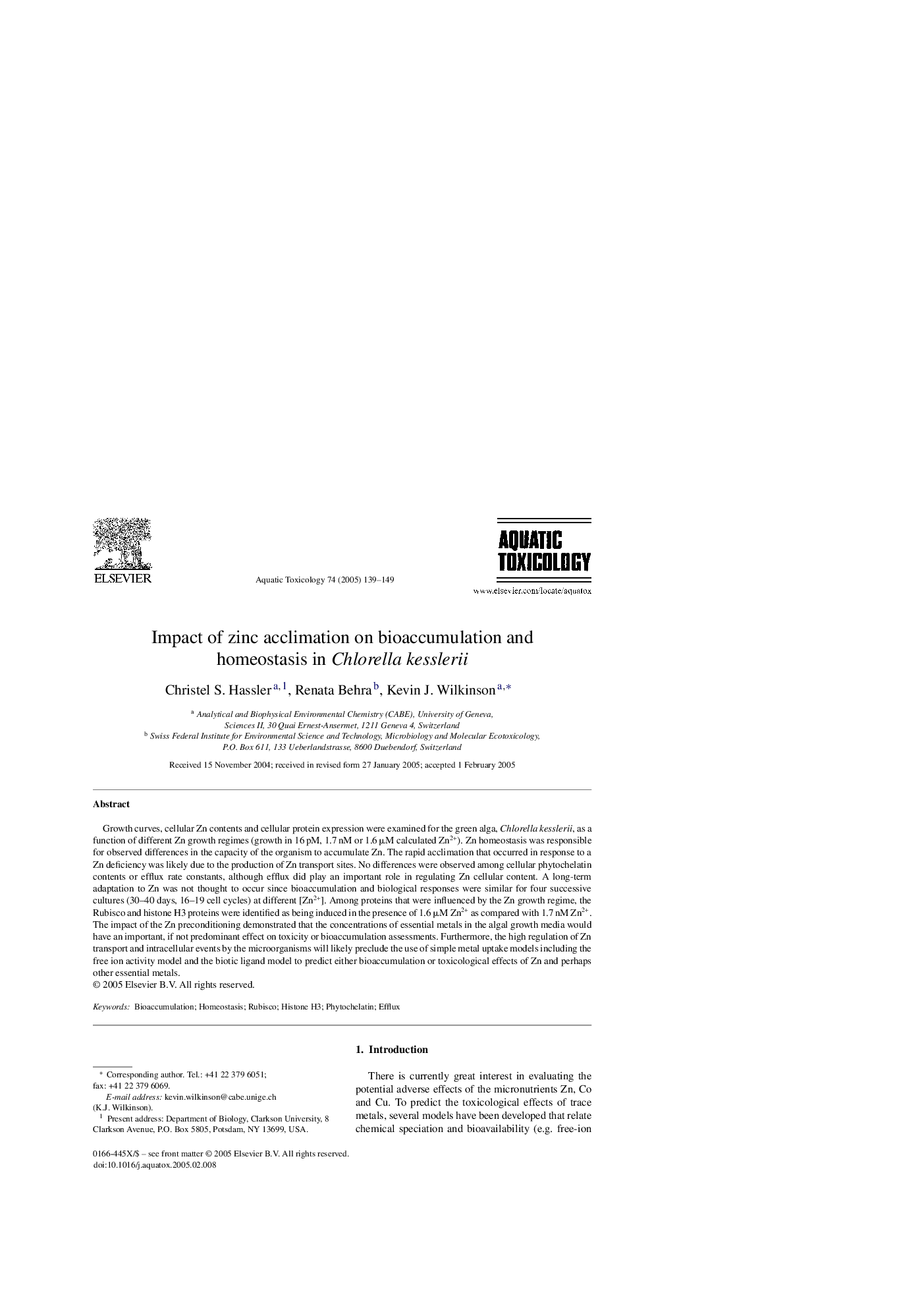| Article ID | Journal | Published Year | Pages | File Type |
|---|---|---|---|---|
| 9478325 | Aquatic Toxicology | 2005 | 11 Pages |
Abstract
Growth curves, cellular Zn contents and cellular protein expression were examined for the green alga, Chlorella kesslerii, as a function of different Zn growth regimes (growth in 16 pM, 1.7 nM or 1.6 μM calculated Zn2+). Zn homeostasis was responsible for observed differences in the capacity of the organism to accumulate Zn. The rapid acclimation that occurred in response to a Zn deficiency was likely due to the production of Zn transport sites. No differences were observed among cellular phytochelatin contents or efflux rate constants, although efflux did play an important role in regulating Zn cellular content. A long-term adaptation to Zn was not thought to occur since bioaccumulation and biological responses were similar for four successive cultures (30-40 days, 16-19 cell cycles) at different [Zn2+]. Among proteins that were influenced by the Zn growth regime, the Rubisco and histone H3 proteins were identified as being induced in the presence of 1.6 μM Zn2+ as compared with 1.7 nM Zn2+. The impact of the Zn preconditioning demonstrated that the concentrations of essential metals in the algal growth media would have an important, if not predominant effect on toxicity or bioaccumulation assessments. Furthermore, the high regulation of Zn transport and intracellular events by the microorganisms will likely preclude the use of simple metal uptake models including the free ion activity model and the biotic ligand model to predict either bioaccumulation or toxicological effects of Zn and perhaps other essential metals.
Related Topics
Life Sciences
Agricultural and Biological Sciences
Aquatic Science
Authors
Christel S. Hassler, Renata Behra, Kevin J. Wilkinson,
